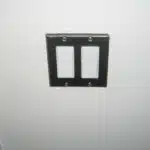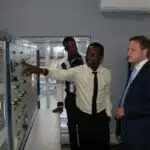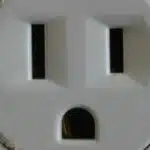Electrical disconnect switches are critical components of electrical systems, designed to isolate power supply from a building or equipment during maintenance or emergencies. They play a crucial role in ensuring the safety of both people and property. When it comes to wiring an electrical disconnect switch, it is essential to understand the basics of wiring and the different types of disconnect switches available.
As an electrical engineer, I have seen instances where improper installation or maintenance of electrical disconnect switches has resulted in fatal accidents. Therefore, it is imperative to educate ourselves on the fundamental principles involved in wiring these devices. In this article, we will explore the basics of wiring for electrical disconnect switches and provide valuable insights on how to ensure safe installation and operation. The information shared here will be useful for anyone involved in electrical installations and maintenance, from electricians to facility managers.
Understanding Electrical Safety
As an electrical engineer, I find it truly fascinating how electricity powers the world around us. However, as much as we rely on it, electricity can also be extremely dangerous if not handled with care. Understanding electrical hazards is crucial to ensuring safety in any electrical installation or maintenance work.
Electricity poses a number of hazards that can cause serious injury or even death if proper precautions are not taken. These hazards include electric shock, arc flashes, and burns. Electric shock occurs when the body becomes part of an electrical circuit, while arc flashes and burns result from high temperatures generated by electrical faults.
The importance of safety measures cannot be overstated when working with electricity. This includes wearing appropriate personal protective equipment (PPE), following safe work practices such as de-energizing circuits before working on them, and ensuring all equipment is properly installed and maintained. By understanding these hazards and taking necessary precautions, we can ensure a safe working environment for ourselves and those around us.
Understanding electrical hazards is essential to any electrical work. However, it is equally important to recognize the role of safety devices such as electrical disconnect switches in mitigating these risks. In the following section, we will explore the importance of these devices and how they can prevent accidents in both industrial and residential settings.
Importance Of Electrical Disconnect Switches
Having a good understanding of electrical safety is crucial when working with electrical systems. This knowledge ensures that you are aware of the potential hazards and are able to take the necessary precautions to avoid any accidents or injuries. One important aspect of electrical safety is the installation and use of electrical disconnect switches.
Electrical disconnect switches are an essential component of any electrical system as they provide a means for shutting off power to a circuit quickly and safely. The installation process for these devices involves several steps, including selecting the appropriate switch for your application, mounting it in a suitable location, and connecting it to the power supply. It is important to follow the manufacturer’s guidelines carefully during installation to ensure that everything is done correctly.
In order to maintain safe operation of your electrical system, it is crucial to adhere to certain safety guidelines when using disconnect switches. These include wearing appropriate personal protective equipment such as gloves and eye protection, ensuring that the area around the switch is clear of any debris or obstructions, and never attempting to operate a switch that appears damaged or faulty. By following these guidelines, you can help prevent accidents and ensure that your system operates smoothly.
Moving forward, there are different types of electrical disconnect switches available on the market today. Each type has its own unique features and benefits, making them suitable for specific applications. In the subsequent section, we will explore some of these options in more detail and discuss how they can be used in various settings.
Different Types Of Electrical Disconnect Switches
Electrical disconnect switches are an important component in electrical systems. They are designed to isolate an electrical circuit from its source of power, which is crucial for safety and maintenance purposes. There are two main types of disconnect switches: manual and automatic.
Manual disconnect switches require manual operation to open or close the switch. They are commonly used in industrial settings where workers need to be able to quickly shut off power in case of emergencies or maintenance work. Manual disconnect switches can be operated using a handle or lever, depending on the design.
On the other hand, automatic disconnect switches are designed to open or close automatically when certain conditions are met. This type of switch is commonly found in residential and commercial settings where it is necessary to control power consumption during peak hours or when utility companies require load shedding. Automatic disconnect switches come in different designs such as contactor-based, circuit breaker-based, and relay-based.
Common applications of electrical disconnect switches include HVAC systems, lighting circuits, electric motors, generators, and transformers. In addition to their primary purpose of isolating electrical circuits for safety and maintenance purposes, these switches also play a critical role in energy management. Proper selection and installation of the correct type of switch can result in significant energy savings for homeowners and businesses alike.
In planning the wiring layout for electrical disconnect switches, it is important to consider factors such as the type of switch needed for the specific application, location requirements (indoor or outdoor), and proper sizing based on voltage and current ratings. It is also important to ensure that all wiring is properly grounded and insulated to prevent hazards such as electrocution or fire. By carefully considering these factors, one can ensure that their electrical system functions optimally while prioritizing safety and energy efficiency.
Planning The Wiring Layout
When planning the wiring layout for electrical disconnect switches, it is important to consider the placement of the electrical boxes. The location of the boxes should be chosen based on accessibility and ease of maintenance. They should also be placed in a way that allows for proper ventilation and clearance around them. It is recommended to have a clear understanding of local codes and regulations before beginning the installation process.
Another crucial aspect to consider when planning the wiring layout is wire routing. The wires must be routed in a manner that prevents them from being damaged or interfering with other systems. They should also be organized in a logical and easy-to-follow manner, which will make future maintenance easier. Wire routing can be achieved through the use of conduits or cable trays, which provide protection and organization.
Overall, proper planning is key when installing electrical disconnect switches. By carefully considering factors such as electrical box placement and wire routing, you can ensure that your installation will meet safety standards and function efficiently. In the next section, we will discuss the importance of choosing the right wiring materials for your project, which is another crucial step toward successful installation.
Choosing The Right Wiring Materials
As an electrical engineer, choosing the right wiring materials is crucial in ensuring a successful installation of electrical disconnect switches. The appropriate gauge of wire should be carefully considered to avoid overloading and potential damage to the switch. It is important to note that larger gauges have a lower resistance, thus allowing more current to flow through. However, this also means it may cost more and may not fit into tight spaces.
Another key factor in selecting wiring materials is insulation. Insulation materials prevent wires from coming into contact with each other or any conductive material, which can cause short circuits and pose safety hazards. It is imperative to choose the right insulation material for the specific application as they vary in their temperature range, chemical resistance, and durability.
Choosing appropriate gauges and insulation materials can make a significant difference in the longevity and safety of an electrical disconnect switch installation. Inadequate wiring has been known to cause fires and other hazards that can put individuals at risk. Therefore, it is highly recommended to consult with a professional electrician or engineer before making any final decisions on wiring materials.
Moving forward, preparing the electrical panel is another critical step in the installation process. A well-prepared panel will make it easier for electricians to work safely and efficiently while minimizing potential mistakes or accidents.
Preparing The Electrical Panel
After installing the electrical disconnect switches, it’s time to prepare the panel for wiring. The first step in this process is to label the panel accurately. It’s essential to have clear and concise labeling so that anyone working on the panel can easily identify which circuits are which. This also ensures that any maintenance or repair work can be carried out safely.
In addition to labeling, circuit identification is also important. Each circuit in the panel should be identified with a unique number or letter combination. This makes it easier to troubleshoot any issues that may arise with individual circuits and helps ensure that everything is connected properly. When identifying circuits, it’s crucial to follow standard electrical codes and guidelines.
Overall, proper panel labeling and circuit identification are critical steps in preparing an electrical panel for wiring. Doing so ensures the safety of anyone working on or near the panel and helps prevent potential hazards. In the next section, we will discuss how to measure and cut wires accurately, ensuring a successful wiring process.
Measuring And Cutting Wires
Accurately measuring wires is essential for successful wiring of electrical disconnect switches. Care must be taken to ensure the correct length of wire for the intended purpose. Cutting wires for electrical disconnect switches requires appropriate tools and techniques. Appropriate tools for cutting wires include wire strippers, wire cutters, and scissors. Care should be taken to ensure the correct gauge of wire is selected for the intended application. The chosen cutting tool should be suited to the type of wire being cut, with wire cutters recommended for most applications. Safety should be the primary concern when selecting cutting tools and when measuring and cutting wires for electrical disconnect switches.
Measuring Wires
Measuring wires is a crucial aspect of wiring basics for electrical disconnect switches. It involves determining the correct length of wire needed and ensuring that the wire gauge matches the circuit’s requirements. Measuring wire gauge is essential because it determines how much current can pass through the wire without overheating or causing a fire. When choosing the right wire gauge, you need to consider factors such as the size of the circuit breaker, the distance between the power source and load, and whether it will be used for low voltage or high voltage applications.
Proper wire length estimation is also essential when measuring wires. If you cut a wire too short, you may not have enough slack to make proper connections, while cutting it too long increases the risk of tangling wires or creating unnecessary bends that can damage them over time. The best way to estimate the right length of wire is to measure the distance between your power source and load and add a few extra inches for slack. Additionally, if you are running multiple wires in parallel, make sure they are all cut to equal lengths.
In summary, measuring wires is an essential skill for anyone working with electrical disconnect switches. To ensure safety and efficiency in your wiring project, always check that your wire gauge matches your circuit requirements and measure your wires’ proper length estimation before cutting them. With this knowledge, you’ll be able to confidently create reliable electrical connections that serve others well.
Cutting Wires
After measuring the wires, the next crucial step is cutting them to the right length. Cutting wires may seem like a simple task, but doing it incorrectly can damage the wire or cause electrical hazards. As an electrical engineer, one must learn how to cut wires correctly using proper wire cutting techniques and wire stripping tools.
Wire cutting techniques involve using different tools to cut wires depending on their size and material. For instance, smaller wires are best cut with wire snips while larger ones require wire cutters or pliers. When cutting wires, ensure that you make a clean cut without crushing, nicking or deforming the wire. This will prevent any future damage that could lead to electrical faults or failures.
Wire stripping tools are also essential when cutting wires as they help remove insulation from the ends of the wire. With these tools, you can strip off just enough insulation to expose the bare copper conductor without damaging it. Furthermore, stripping tools come in different sizes and types depending on the gauge of wire being stripped and whether it’s solid or stranded.
In conclusion, knowing how to measure and properly cut wires is a fundamental skill for anyone working with electrical disconnect switches. Electrical engineers must understand that proper wire cutting techniques and usage of appropriate wire stripping tools are necessary to provide efficient wiring connections that serve others well. By taking time to learn these techniques and utilizing correct tools for each job, professionals can ensure they create safe and reliable electrical connections that meet industry standards.
Selecting Tools
When it comes to measuring and cutting wires, selecting the right tools is just as important as knowing the proper techniques. Electrical engineers should have a variety of wire-cutting tools at their disposal, including wire snips, cutters, and pliers. The size and material of the wire will determine which tool is best suited for the job. It’s important to select the correct tool to avoid damaging the wire or creating electrical hazards.
Safety gear should also be considered when selecting tools for cutting wires. Eye protection is essential since flying metal shards can easily cause eye injuries during wire cutting. Wearing gloves can protect hands from cuts and abrasions while handling sharp-edged wires or stripping tools. Proper footwear with slip-resistant soles can prevent slips and falls that could lead to serious injuries.
In conclusion, selecting the appropriate tool and safety gear for any given task is crucial in ensuring a safe and efficient work environment when measuring and cutting wires. Taking time to properly choose tools based on wire size, material, and safety considerations can prevent accidents and ensure high-quality results that meet industry standards. Electrical engineers must always prioritize safety when working with electrical systems by using appropriate tools and protective equipment while keeping in mind their ultimate goal of providing reliable service to others.
Stripping And Connecting Wires
Having measured and cut the wires to length, the next step in wiring basics for electrical disconnect switches is to strip and connect the wires. Wire stripping techniques are essential for ensuring that the wire is stripped only to the required length while avoiding damage to the conductor. The most common technique involves using a wire stripper tool, which has different size notches for different gauge wires. The tool is used to grip and pull off a section of insulation from the end of the wire.
Proper wire connections are critical for safety and reliability. There are several types of wire connections, including crimping, soldering, and screw terminals. Crimping involves using a specialized tool to compress a metal sleeve around the stripped end of the wire and into contact with another conductor or terminal lug. Soldering involves melting a metal alloy onto the stripped ends of two or more wires, creating an electrically conductive bond between them. Screw terminals involve wrapping the stripped end of a wire around a terminal screw and tightening it down with a screwdriver.
The importance of grounding cannot be overstated in electrical installations. Grounding provides a safe path for current to flow in case of faults or short circuits, preventing electrical shock or equipment damage. To ground an electrical system, a grounding electrode conductor (GEC) is connected between the main service panel’s neutral bar and one or more grounding electrodes buried in the earth near your home. Properly sized GECs must be used, with connections made using approved clamps or lugs that provide good mechanical and electrical contact with both conductors involved.
Grounding The System
Grounding is an important safety measure in electrical wiring and is necessary for the proper functioning of any electrical system. There are various types of grounding, such as equipment grounding, grounding of electrical systems, and functional grounding. To ensure proper grounding, a ground wire must be connected to the system. This connection should be made to the service equipment and to any metal parts that are not insulated. Grounding wires should also be connected to the equipment frame, the neutral busbar, and any other metal parts that are in contact with the system. Grounding systems should be tested to ensure that they are properly connected and functioning. Grounding is an essential part of any electrical system and its proper functioning should never be overlooked.
Importance Of Grounding
Ensuring a secure and reliable electrical system requires the use of grounding techniques. One crucial aspect in this process is bonding, which involves joining different conductive parts to create an effective grounding path. The importance of bonding cannot be overstated, as it helps prevent electrical shock hazards and ensures that electrical equipment operates safely and efficiently.
Grounding the system is also essential for protecting individuals from electric shock, preventing damage to equipment, and minimizing the risk of fires resulting from electrical faults. Grounding creates a low-resistance path for current flow to earth, thus reducing the voltage buildup between equipment enclosures. This decreases the potential for arcing or sparking that could cause accidents or damage to equipment.
For these reasons, it is critical to ensure proper grounding when installing disconnect switches. Grounding wires should be securely fastened to the switch enclosure and connected to an earth ground source with low impedance. Additionally, all exposed conductive parts should be bonded together using suitable connectors and conductors. These measures help provide a safe environment for both people and equipment by ensuring that any stray currents are immediately dissipated to ground without causing harm or damage.
In conclusion, proper grounding techniques play a vital role in ensuring safety in electrical disconnect switches installations. Bonding helps create an effective grounding path while minimizing risks associated with electrocution hazards and reducing the likelihood of electrical faults leading to fires or equipment damage. Therefore, it is essential to employ strict adherence to best practices when installing disconnect switches to avoid potentially dangerous situations arising from inadequate grounding measures.
Types Of Grounding
Grounding the system is a crucial aspect of ensuring safety in electrical installations. As previously discussed, proper grounding helps prevent electric shock hazards and reduces the risk of equipment damage and fires resulting from electrical faults. In this regard, it is essential to understand the various types of grounding available and their requirements.
There are different types of grounding, including earth grounding, equipment grounding, and system grounding. Earth grounding involves connecting conductors to an electrode buried in the ground to create a low-impedance path for current flow. Equipment grounding aims to provide a safe path for fault currents by connecting exposed conductive parts to ground. System grounding involves connecting one or more phases of a power distribution system to ground through a grounded neutral conductor.
The type of grounding used depends on specific requirements such as voltage levels, fault current magnitudes, and system configurations. For instance, high-voltage systems may require additional protection measures such as isolated grounds or non-conventional methods like resonant grounding. Therefore, it is crucial to understand the different types of grounding available and their requirements when designing or installing electrical systems that require proper bonding for effective operation.
Connecting Ground Wires
Grounding is an essential aspect of electrical installations, and it involves connecting conductors to the earth or ground to create a low-impedance path for current flow. Proper grounding techniques are crucial in ensuring safety in electrical systems by preventing electric shock hazards, equipment damage, and fires resulting from electrical faults. Therefore, it is essential to understand the different types of grounding available and their requirements.
One critical aspect of proper grounding is connecting ground wires. Ground wires are conductors that connect equipment or devices to the earth or ground. They provide a path for fault currents to flow away from the equipment and into the ground, preventing electric shock hazards and reducing the risk of equipment damage and fires resulting from electrical faults.
Connecting ground wires involves using appropriate tools and materials to ensure a secure connection between the equipment or device being grounded and the earth or ground. It is important to use adequately sized conductors based on the current-carrying capacity of the circuit, as undersized conductors can overheat and cause fires. Additionally, connections should be made tight with proper crimping tools or compression fittings to minimize resistance at joints. Properly connecting ground wires is crucial in ensuring effective grounding of electrical systems and maintaining safe operation.
Testing The Circuit
The circuit is like a highway. Just as cars need to flow smoothly on the road, electricity needs to flow smoothly through the circuit. Circuit continuity is essential to ensure that electricity flows uninterrupted, and there are no breaks or blockages in the path. To test circuit continuity, use a multimeter to measure electrical resistance across each component of the circuit. If there is any break in continuity, it will be indicated by an infinite resistance reading.
Once you have verified circuit continuity, it’s time to check for voltage testing. Voltage testing helps you determine if there is sufficient energy flowing through the circuit. To perform voltage testing, use a voltmeter to measure the voltage across different points of the circuit. Ensure that all switches are closed and that power is flowing through the wires before measuring voltage. A low reading indicates low energy flow or a problem with one or more components of the circuit.
Testing the circuit is crucial before powering up your equipment and ensuring that everything runs correctly and safely. In case you encounter issues during testing, it’s best to troubleshoot common problems right away before proceeding with installation or repairs. Troubleshooting common issues include identifying loose connections, checking for damaged wires or components, and verifying proper grounding of electrical equipment. By addressing these issues promptly and efficiently, you can prevent future problems from occurring and ensure your system operates optimally for years to come.
Troubleshooting Common Issues
After testing the circuit, it is important to be aware of common issues that may arise when using electrical disconnect switches. Troubleshooting solutions can help identify and resolve problems quickly and efficiently. One of the most common mistakes is failing to properly ground the switch, which can cause electrical shock or damage to equipment.
Another issue that may arise is a malfunctioning switch due to improper installation or wear and tear. In this case, troubleshooting may involve checking connections, replacing faulty parts, or even replacing the entire switch. It is important to follow manufacturer guidelines and ensure compliance with electrical codes and standards when making any repairs or replacements.
Ensuring compliance with electrical codes and standards is crucial in preventing accidents and ensuring safe operation of electrical disconnect switches. Proper grounding, installation, and maintenance are essential for maintaining a safe work environment. By staying vigilant and addressing common issues as they arise, operators can ensure that their equipment is functioning properly and avoid potential hazards.
Ensuring Compliance With Electrical Codes And Standards
Metaphorically speaking, electrical codes and standards are the backbone of any electrical system. Without them, the entire system can crumble to the ground with severe consequences. As an electrical engineer, it is crucial to ensure that all installations comply with the codes and standards set by regulatory bodies. Failure to do so can lead to common violations that will cause problems during the electrical inspection process.
To avoid such violations, it is essential to follow a set of guidelines. Firstly, one should always refer to the latest versions of applicable codes and standards when designing or installing electrical systems. Secondly, it is imperative to ensure that all equipment used in the installation meets relevant specifications laid down by regulatory bodies. Finally, proper documentation of all installations and maintenance procedures must be kept for future reference.
The electrical inspection process involves a thorough examination of all aspects of an electrical system’s design, installation, and maintenance procedures. If any violation is found during this process, corrective action must be taken immediately. It is vital to address these issues promptly as they can pose significant safety hazards if left unattended. Therefore, it is essential to maintain proper compliance with codes and standards throughout an electrical system’s life cycle.
In ensuring compliance with codes and standards for disconnect switches’ wiring basics, maintaining these devices is equally important in preventing code violations and promoting safety in power distribution systems.
Maintaining Electrical Disconnect Switches
Regular cleaning of electrical disconnect switches is essential for ensuring optimal performance. Care should be taken when cleaning to avoid exposing components to moisture or other contaminants. Routine inspection of electrical disconnect switches is necessary to ensure proper functionality. Visual inspection of the switch should be conducted to identify any signs of damage or wear. Troubleshooting of electrical disconnect switches should be conducted to diagnose any issues. This should include testing the switch in the open and closed positions to evaluate the continuity of the circuit. Necessary repairs should be completed to ensure reliable operation of the switch.
Cleaning
Maintaining electrical disconnect switches is a crucial task for all electricians. The importance of cleaning cannot be overstated, as it is an essential aspect of switch maintenance. Cleaning techniques can vary depending on the type of switch being used. However, regardless of the switch type, regular cleaning can help reduce wear and tear and extend the life of the switch.
To ensure that switches are clean and functioning correctly, dusting or wiping down with a dry cloth is recommended. For dirtier switches, a damp cloth can be used to wipe away grime and dirt residue carefully. It is important to avoid using harsh chemicals when cleaning as they can damage the switch contacts and insulation materials.
In addition to regular cleaning, other maintenance tips include checking for loose connections or broken parts. Any damaged components should be replaced immediately to prevent further damage or electrical hazards. By incorporating these practices into routine maintenance tasks, electricians can ensure that electrical disconnect switches remain in good working condition for many years to come.
Inspection
Electrical disconnect switches are critical components of electrical systems, and their proper maintenance is vital to ensure the safety and reliability of the system. In addition to regular cleaning, periodic inspection is another important aspect of maintaining these switches. Inspections can help identify common defects such as loose connections, worn-out contacts, or broken parts that may compromise the switch’s performance.
To conduct an effective inspection, electricians must follow specific safety precautions to prevent accidents or injuries. They should wear appropriate personal protective equipment (PPE), such as gloves and safety glasses, when working with electrical equipment. Before starting the inspection process, it is essential to de-energize the switch by turning off the power supply and locking out the circuit breaker.
During the inspection process, electricians should thoroughly examine all parts of the switch for any signs of damage or wear. They should check for loose connections, which can cause overheating and increase the risk of fire or electrical shock. Additionally, they should inspect the contacts for signs of arcing or pitting, which can affect switch operation and lead to premature failure. By conducting regular inspections and addressing any issues promptly, electricians can extend the life of electrical disconnect switches while ensuring optimal performance and safety.
Troubleshooting
Electrical disconnect switches are critical components of electrical systems that require regular maintenance to ensure optimal performance and safety. However, even with proper maintenance, malfunctions can still occur due to many factors such as wear and tear, environmental conditions, or human error. These malfunctions can cause disruptions in power supply, damage to equipment, or even pose a significant risk to personnel safety.
To address these issues, electricians use troubleshooting techniques to identify the causes of malfunctions and take appropriate corrective actions. Troubleshooting involves a systematic approach to isolate the problem by checking various components of the switch and ruling out possible causes. It requires a combination of technical knowledge, experience, and analytical skills to diagnose complex issues accurately.
Electricians typically start by inspecting the switch for visible signs of damage or overheating. They then use specialized tools such as multimeters or thermal imaging cameras to test the switch’s voltage levels, resistance, or temperature. By analyzing these readings and comparing them with expected values, they can determine if any components are malfunctioning or need replacement. Troubleshooting also involves following standard safety procedures such as wearing PPE and de-energizing the circuit before performing any tests. With proper training and attention to detail, electricians can effectively troubleshoot electrical disconnect switches and ensure their optimal performance and safety.
Hiring A Professional Electrician
Hiring a professional electrician is highly recommended for any electrical work, including disconnect switch installation. While it may seem like a cost-effective alternative to attempt DIY projects, the risks of electrical shock or fire can far outweigh any potential savings. A licensed electrician has the training and expertise to ensure that the job is done safely and correctly.
When hiring an electrician, it’s important to do your research and choose someone who is reputable and experienced. Look for reviews or ask for recommendations from friends or family members who have had similar work done. Additionally, be sure to check that the electrician is licensed and insured in your state.
While some may still consider attempting a DIY project, it is crucial to take proper precautions when working with electricity. This includes turning off the power supply before beginning any work, using tools specifically designed for electrical work, and wearing protective gear such as rubber gloves and goggles. However, even with these precautions in place, there are still risks involved. It’s better to leave electrical work to the professionals.
Transition into subsequent section about resources for further learning and support: For those interested in learning more about electrical work or seeking additional support, there are many resources available online. From instructional videos to forums where you can ask questions of professionals in the field, there are plenty of options for expanding your knowledge and skillset.
Resources For Further Learning And Support
For those who wish to learn more about electrical disconnect switches and wiring basics, there are several resources available online. Online courses provide an excellent opportunity for individuals to learn at their own pace and on their own time. These courses can cover a variety of topics related to electrical systems, including wiring diagrams, voltage drop calculations, and the installation of electrical components.
Industry certifications are also available for those looking to advance their knowledge and skills in the field of electrical engineering. These certifications demonstrate a level of expertise in a particular area and can help individuals stand out in the job market. Some popular industry certifications include the Certified Electrical Safety Compliance Professional (CESCP) certification and the Certified Electrical Technician (CET) certification.
In addition to online courses and industry certifications, there are also many forums and support groups available for individuals seeking further learning opportunities. These forums provide a space for individuals to ask questions, share knowledge, and connect with others who share similar interests. By participating in these communities, individuals can gain valuable insights into best practices and new developments within the field of electrical engineering.
- Online courses provide an excellent opportunity for self-paced learning.
- Industry certifications demonstrate expertise in a particular area.
- Forums and support groups offer a space for collaboration and knowledge sharing.
Overall, there are many resources available for individuals interested in learning more about electrical disconnect switches and wiring basics. From online courses to industry certifications to support forums, there are opportunities for anyone looking to advance their skills or knowledge in this field. Whether you’re just starting out or looking to enhance your existing skillset, these resources can help you achieve your goals.
Conclusion
In conclusion, the proper wiring of electrical disconnect switches is crucial to ensure safety in any electrical installation. It is important to understand the different types of disconnect switches available and plan the wiring layout accordingly. Choosing the right materials and ensuring compliance with electrical codes and standards is equally important.
Maintenance of electrical disconnect switches must not be overlooked. Just like a well-maintained machine, these switches require periodic checkups and cleaning to function optimally. It is always recommended to hire a professional electrician for installation, maintenance, and repair work.
As an allegory, I compare electrical disconnect switches to the heart of an electrical system. Just as the heart pumps blood throughout our body, these switches allow electricity to flow through various circuits. Any malfunction can cause serious damage or even death. Therefore, it is imperative that we take proper precautions and follow safety protocols while dealing with electricity. With careful planning, proper installation, and regular maintenance, we can ensure a safe and efficient functioning of any electrical system.
Image Credits
- “Disconnect switch and electrical panels at the Clinica Profamilia in San Juan, PR” by Clean Energy Group / Clean Energy States Alliance (featured)



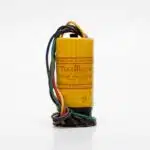

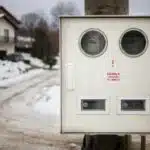
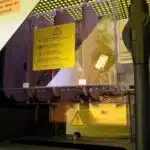


![How To Replace A Single-Pole Wall Switch 9 '... All in all it's just another [switch] in the wall.' ...](https://green-life.blog/wp-content/uploads/2023/05/17xmP5qMtVjq-150x150.jpg.webp)

